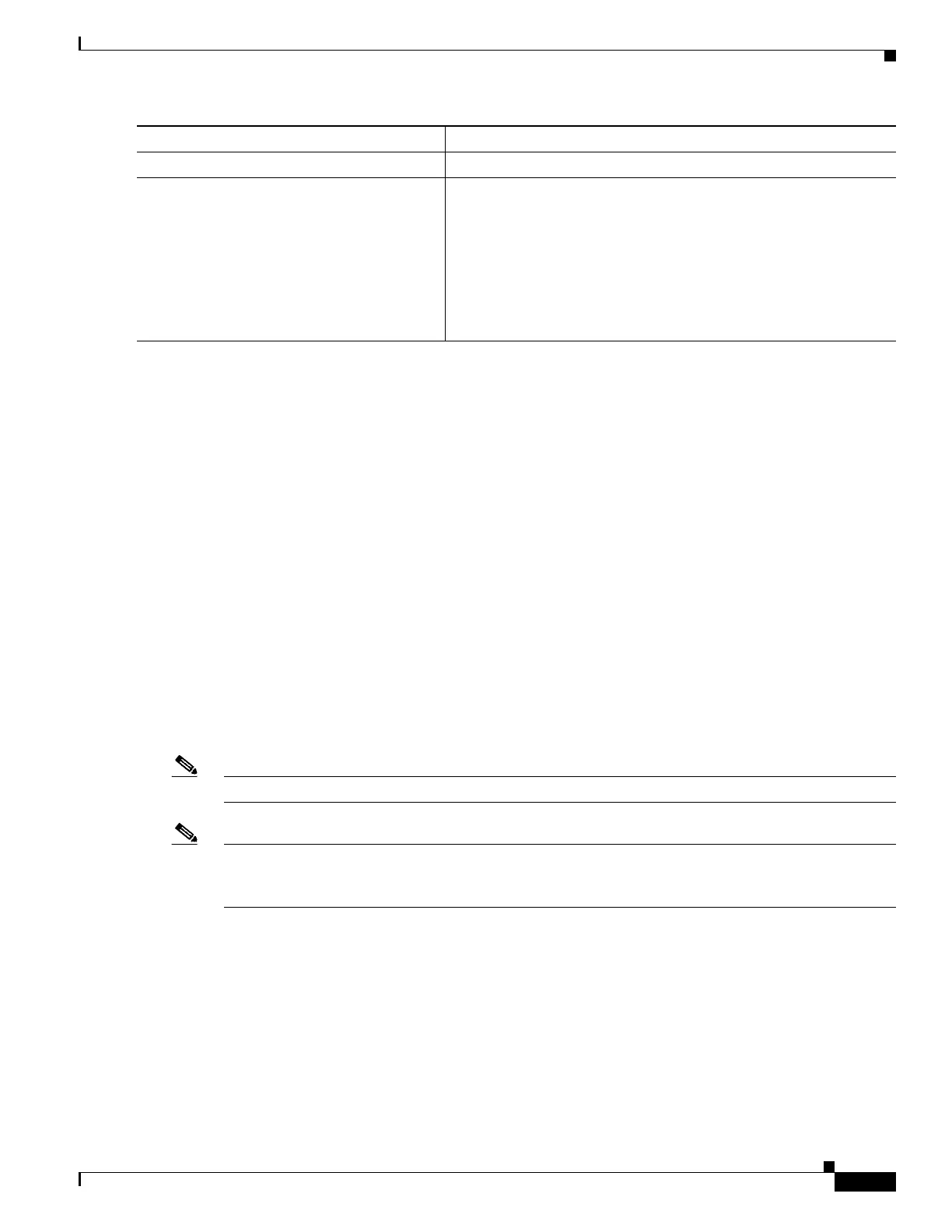42-81
Software Configuration Guide—Release IOS XE 3.6.0E and IOS 15.2(2)E
OL_28731-01
Chapter 42 Configuring Quality of Service
Configuring VSS Auto-QoS
This is a global configuration command. You can override it with the per port, per class, queue-limit
command.
For a standalone supervisor engine, you must reboot the engine after applying this command.
For redundant supervisors in SSO mode, you must enter the redundancy reload shelf command enforce
reboot to both the supervisors. For redundancy supervisors in RPR mode, you must execute two
consecutive switchovers to enforce the system queue limit on both the supervisors.
This example shows how to set the queue limit globally to 1024 on a standalone supervisor engine:
Switch> enable
Switch# configure terminal
Switch(config)# hw-module system max-queue-limit 1024
Switch(config)# exit
Switch# reload (for standalone supervisors)
Switch# redundancy reload shelf (for redundancy supervisors in SSO mode)
or
Switch# redundancy force-switchover (followed by another redundancy force-switchover, for
redundancy supervisors in RPR mode)
Configuring VSS Auto-QoS
Note Auto-QoS cannot be applied to VLANs or EtherChannel interfaces.
Note If you have an auto-QoS policy on a port connected to a device that supports CDP, the port is
automatically trusted. However, if the device does not support CDP (like legacy Digital Media Player),
QoS trust must be applied manually.
The Catalyst 4500 Series Switch employs the MQC model. This means that instead of using certain
global configurations (like qos and qos dbl), auto-QoS applied to any interface on a switch configures
several global class-maps and policy-maps.
We need QoS in both directions, both on inbound and outbound. Inbound, the switch port needs to trust
the DSCP in the packet (done by default). Outbound, the switch port needs to give voice packets "front
of line" priority. If voice is delayed too long by waiting behind other packets in the outbound queue, the
end host drops the packet because it arrives outside of the receive window for that packet.
Step 3
Switch(config)# exit
Returns to privileged EXEC mode.
Step 4
Switch# reload
or
Switch# redundancy reload shelf
Switch# redundancy force-switchover
Reloads standalone supervisor engine.
Reloads redundancy supervisor engine in SSO mode.
Reloads redundancy supervisor engine in RPR mode.
This command must be followed by another redundancy
force-switchover.
Command Purpose

